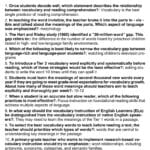Hey there! We all marvel at how easily some children communicate. But for children with autism, developing these skills can be challenging. Applied Behavior Analysis (ABA) therapy offers powerful tools, like intraverbal training, to help these children connect with the world around them. This guide provides practical, step-by-step instructions for teaching intraverbal skills, empowering you to make a real difference.
Understanding Intraverbals: The Foundation of Communication
Intraverbals are the conversational building blocks in ABA therapy. They’re how we respond to others’ words without needing a physical object to prompt us. Unlike echoing (repeating what’s heard), intraverbals link ideas and words, making conversations flow. For example, when asked “What’s your favorite color?” a child responding “Blue!” demonstrates intraverbal communication. This seemingly simple exchange is crucial for everything from chatting with friends to answering questions in class. It bridges understanding language (receptive language) and expressing it (expressive language). Without strong intraverbal skills, children may struggle to share their thoughts and feelings, hindering their connection with the world. For a deeper understanding of restrictions sometimes necessary in therapeutic settings, you can explore our guide on involuntary seclusion.
Why Intraverbals Matter
Intraverbals are a cornerstone of communication, enabling children with autism to:
- Engage in back-and-forth conversations: Building social connections and friendships.
- Navigate social situations: Responding appropriately to questions and comments.
- Excel in school: Answering questions, participating in discussions, and expressing knowledge.
- Gain independence: Expressing needs, wants, and opinions.
Building Intraverbal Skills: A Step-by-Step Guide
Teaching intraverbals is a journey, best approached one step at a time. Here’s a practical roadmap:
Step 1: Assessment – Knowing the Starting Point
Before diving in, understand the child’s current abilities. What questions can they answer? Can they complete familiar songs or rhymes? A thorough assessment pinpoints their specific needs, allowing you to tailor your teaching.
Step 2: Prompting and Fading – Gentle Guidance
Prompts are helpful hints. You might start by asking a question and offering part of the answer. As the child progresses, gradually reduce these hints, encouraging independent responses. It’s like training wheels for communication.
Step 3: Reinforcement – Celebrating Success
Positive reinforcement is essential! Celebrate correct intraverbal responses with praise, a favorite toy, or a high five. Positive feedback makes learning enjoyable and motivating.
Step 4: Generalization – Real-World Application
Practice intraverbals in various settings—at home, school, and in the community—with different people. This ensures the skills become ingrained and transferable.
Step 5: Shaping – Leveling Up
Once simple intraverbals are mastered, raise the bar. Introduce more complex questions and encourage longer responses, fostering more detailed expression.
The Power of Intraverbals: Benefits Beyond Words
| Benefit | Description |
|---|---|
| Stronger Social Connections | Intraverbals empower children to engage in meaningful conversations, share experiences, and build friendships. |
| Academic Achievement | Answering questions, participating in discussions, and expressing knowledge are crucial for school success. |
| Greater Independence | Expressing needs, wants, and opinions fosters self-advocacy and allows children to take charge of their lives. |
Exploring Intraverbal Examples
Intraverbals encompass various communication forms:
| Example | Type of Intraverbal Behavior |
|---|---|
| Responding to “What’s your name?” | Answering a question |
| Completing “Twinkle, twinkle, little…” | Filling in the blank |
| Singing the next verse of a song | Responding to a verbal cue |
| Reciting lines from a play | Memorized verbal response |
| Answering “Knock, knock” with “Who’s there?” | Part of a verbal routine |
| Describing a past event | Storytelling |
| Engaging in a conversation | Conversational exchange |
Understanding Intraverbal Prompts in ABA
Intraverbal prompts are verbal cues that encourage communication beyond simple labeling. They’re like unlocking a treasure chest of language. For example, asking “What animal barks?” instead of pointing at a picture of a dog encourages the child to use their words. Their answer, “A dog,” is the intraverbal response. These prompts often resemble everyday conversations, bridging the gap between labeling and complex communication.
Here are some examples:
| Intraverbal Prompt | Possible Intraverbal Response |
|---|---|
| “Twinkle, twinkle, little…” | “…star” |
| “Ready, set,…” | “…go!” |
| “If you’re happy and you know it…” | “…clap your hands” |
| “What’s your favorite color?” | “Blue” |
| “What did you do at school today?” | “I played with blocks and sang songs.” |
Intraverbals vs. Tacts in ABA
Both intraverbals and tacts are essential verbal behaviors, but they function differently. When a child sees a firetruck and shouts, “Truck!”, that’s a tact—labeling something tangible. If asked, “What makes a ‘woo woo’ sound?” and they reply, “Firetruck!”, that’s likely an intraverbal. The response is triggered by the question, not a visual cue. Here’s a helpful table:
| Verbal Operant | Trigger (Antecedent) | Example |
|---|---|---|
| Tact | Sensory input (seeing, hearing, touching something) | Child sees a cat and says, “Cat.” |
| Intraverbal | Verbal cue (question, statement) | Therapist asks, “What animal meows?” Child replies, “Cat.” |
Understanding this difference helps therapists tailor their ABA strategies. If a child struggles with tacts, they might focus on labeling objects. If intraverbals are challenging, they’ll work on conversational skills. For those interested in more complex mathematical concepts, our guide on the integral of x secx might be of interest.
The Future of Intraverbal ABA
While we’ve learned much, research is ongoing. Scientists constantly explore new techniques, suggesting our understanding of intraverbals will probably evolve. This ongoing exploration offers exciting possibilities for unlocking communication potential. Intraverbal ABA empowers children to connect, express, and thrive, one conversation at a time.
- Unlocking 2-Letter Words with U: The Definitive Guide - April 4, 2025
- Unlock Words with the Letters THREE: Top Unscramble Tools 2025 - April 4, 2025
- Master Scrabble: X & Z Words for High Scores - April 4, 2025
















